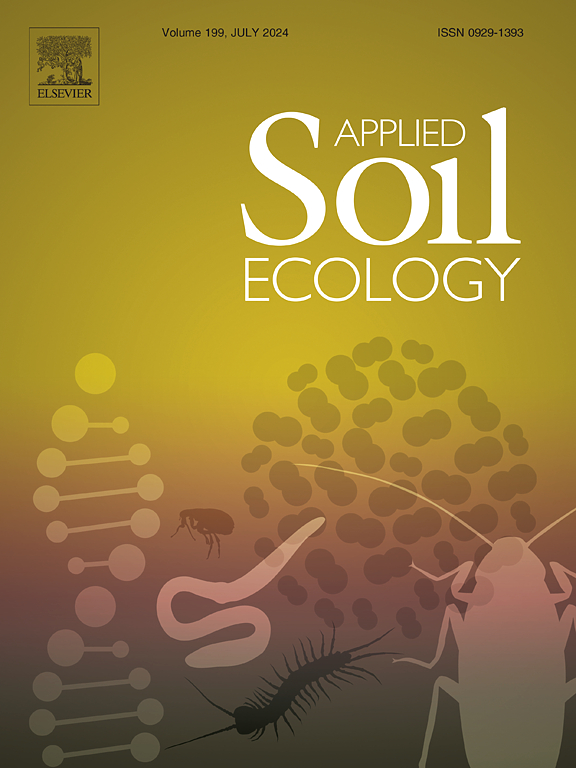Mechanisms of microbial life strategy regulate the temperature sensitivity of soil respiration under winter warming conditions
IF 4.8
2区 农林科学
Q1 SOIL SCIENCE
引用次数: 0
Abstract
This study investigated the mechanisms by which changing climatic and environmental scenarios (elevated freeze-thaw temperatures and increased pesticide contamination) affect the temperature sensitivity of soil respiration (Q10) in seasonally frozen zones. We selected albic, chernozem and luvisol soils as typical soil types, and accelerate freeze-thaw cycle treatments were set at 0 (CK), 60 (A1), 120 (A2), 180 (A3), and 240 (A4) cycles, accompanied by a warming process of 15 °C. Meanwhile, soil pesticide enrichment concentrations were set at 0, 5, 10, 15, and 20 mg·kg−1, respectively. The aim of the study was to explore the role of the transformation in microbial life strategists in driving the temperature sensitivity of soil respiration under freeze-thaw cycles and pesticide enrichment processes. The results indicated that the stability of soil aggregates was significantly reduced by freeze-thaw cycles. The release of labile carbon stored in aggregates into the soil resulted in a range of 31.35 % ∼ 48.65 % enhancement of soil carbon quality (aliphatic carbon/ aromatic carbon) in albic, chernozem, and luvisol soils relative to the CK group under the action of 120 freeze-thaw cycles. The r-selected taxa rapidly decompose labile carbon sources and use them for growth and reproduction, and the dominant taxa in the soil is transformed from k-strategists to r-strategists. Thus, the k- strategist characterization, such as bacterial oligotroph /copiotroph (B O/C), gram-positive/negative (G+/G-), and recalcitrant/labile organic carbon degradation enzyme activities (enzyme L/R), were significantly reduced by freeze-thaw cycles and pollution. Although the stronger metabolic activity and adaptive capacity of r-strategists increased the soil carbon mineralization rate, they weakened the sensitivity of metabolic activity to temperature changes. The Q10 of the three soils decreased by 5.68 %, 10.66 %, and 30.42 %, respectively, compared with the CK. Therefore, the stimulatory effect of climate warming on soil respiration rates is not consistently enhanced, and carbon emission values may be lower than expected.

求助全文
约1分钟内获得全文
求助全文
来源期刊

Applied Soil Ecology
农林科学-土壤科学
CiteScore
9.70
自引率
4.20%
发文量
363
审稿时长
5.3 months
期刊介绍:
Applied Soil Ecology addresses the role of soil organisms and their interactions in relation to: sustainability and productivity, nutrient cycling and other soil processes, the maintenance of soil functions, the impact of human activities on soil ecosystems and bio(techno)logical control of soil-inhabiting pests, diseases and weeds.
 求助内容:
求助内容: 应助结果提醒方式:
应助结果提醒方式:


